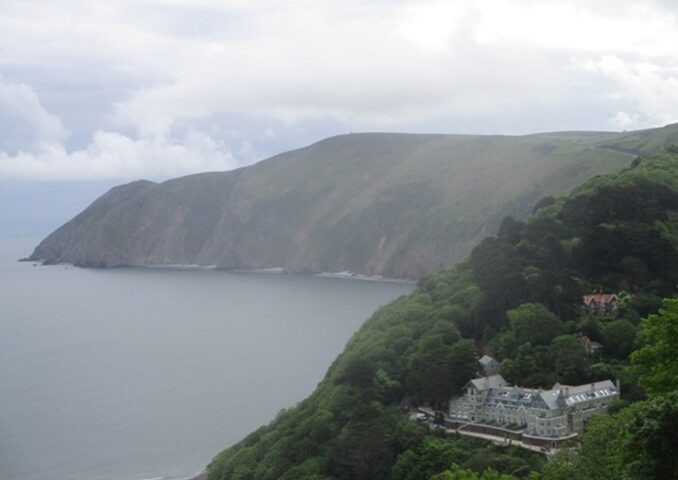
It takes a week to cycle from Penzance to Berwick. It took me 40 years. Because on the way, I wanted to include every town in England, in what amounted to some two years of day-rides. Most of these rides were point-to-point, but some were loops, and some looked on the map like a dropped noodle. It wasn’t a continuous line, but many separate lines, and all rides included towns I had not visited before. I used trains to get to starting points. Each ride had to be at least 20 miles, and in each new town, I had to touch a central feature, ideally the market cross or town hall. This is just one of hundreds of rides on this lifetime’s journey. A few more journey writeups can be found at my “Riding the Shires” website, from which this was taken, at Riding the Shires. Half a century of cycle-touring.
May 2024, Lynton: Rarely do I complete an overnight in a big hotel without losing my room at least once (I’ve been known to lose the whole hotel after a promenade). Mine, No. 40-something, was actually quite tricky to find, because it was hidden away behind a fire door at the end of a corridor. Reception put me right.
That embarrassment ended my early morning constitutional around the centre of Lynton, on refreshed legs. This was a jumbled, cramped place, so steep that kitchens looked into bedrooms across the way. There were few streets wide or straight enough to for, say, a BT maintenance van to comfortably pass a parked car. A 17th-century coaching inn stood at the bottom, but it was hard to imagine any stagecoach negotiating these switchback slopes.
Lynton, and its twin, Lynmouth, have an unusual history among English seaside resorts. Originally fishing villages facing each other across the River Lyn, they were “discovered” by British tourists during Napoleanic times because the coast here was thought to recall the Swiss landscapes they could no longer visit. Having worked a few months in the Alps, I can think of few places less like landlocked Switzerland than the North Devon coast, but, with the encouragement of gushing Romantic poets, this “Little Switzerland” flourished, and lots of vaguely Swiss-lodge type hotels went up.
In fact, Lynton and Lynmouth reminded me more of Japan, where rugged, vulnerable coasts are frequently subject to flood and landslide disasters. This happened to Lynmouth over two days in August 1952, when heavy rains overwhelmed Exmoor’s absorptive capacity, causing the West Lyn river to rise by up to 60 feet. Lynmouth, at shore level, was devastated and 34 people lost their lives. A lot of the damage was caused by what the Japanese call a yamatsunami, mountain tsunami, which is a sudden flood that results from the breach of an artificial dam caused by debris blocking a river and allowing a mass of water to pile up behind the obstruction.
It was hard to imagine all that this quiet morning, I sat a while in the cemetery overlooking Lynmouth and the bay. The view was so good that they’d put pub benches among the graves, so that in summer holidaymakers could watch the sun set over the Bristol Channel with a few cans of Stella, in company with the spirits of Lyntonians past. (And, in the absence of a loo, discreetly pee away the Stella behind one of the taller headstones, I’ll bet.)
Then back to the hotel for that buffet breakfast, which I intended to make a button-buster, as this feed had to make up for the previous day’s fast as well as fuel me for this jaunt along the Somerset coast to Barnstaple. I was curious and gratified to note as I guzzled plates of bacon with scrambled eggs and hash browns that I was probably the youngest of the dozen other guests in the dining room. Seventy looked to be about the median age as they shuffled stiffly about with their breakfast trays and dribbled crumbs over their Daily Telegraphs. A couple were in wheelchairs. When I told someone at the next table — not boasting, just answering a question — I’d cycled here, across Exmoor, she almost dropped her fork into her lap. “You cycled here? Good Lord. I struggle just to get into my car these days.”
The receptionist, who watched me faff around with the bike by the door, was a scion of the family that had originally owned Valley of Rocks hotel. She said her great-great-grandfather had lost the place on “the turn of a card.” I said I’d heard that old chestnut a few times now at various fine old properties around England. But she insisted that it was true.
Though I’d stayed at the hotel, I didn’t have time to visit the feature it’s named for, the actual Valley of Rocks. Instead, I went round it. The long road out of Lynton coiled around the contours. It was so quiet you could hear sheep bleating across the valley. The calm ended abruptly at Barbrook, where I left the bypassed Lynton idyll in its loop and ran into the busy, noisy A39. And with it, the worldly problems of the West Country.
At a nearby petrol station, where I bought some food for the road, I noticed a story in the West Somerset Free Press saying that motorhomes staying long-term without approval had become an issue in Minehead, some 20 miles up the coast to the east. I asked the middle-aged lady on the till if that was happening here as well.
“Not so much,” she replied, and then added, pugnaciously, “Why? Is an issue with you?” No, I said. I just wanted to know more about it. She explained that this area was suffering from both a chronic housing shortage and a glut of second or even third homes, whose wealthy owners lived elsewhere. In her own village, Brendon, which I’d passed near the previous day, “only six properties are lived in all the time. And renting a small cottage here is £700 a month. Which, I can tell you, is more than a North Devon petrol station attendant can afford.” I’d assumed from the headline that it was outsiders who had been cluttering up roads and outstaying their welcome in their motorhomes, but, as I pulled away, I wondered if she wasn’t also referring to locals forced into them because they were unable to buy or rent local properties.
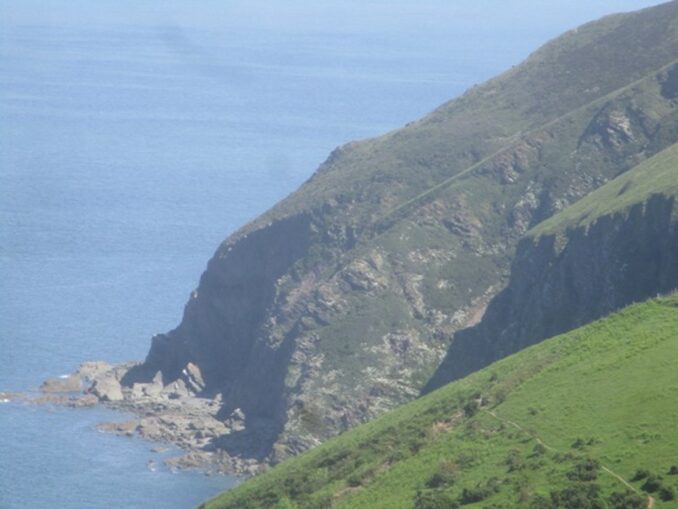
But it was a glorious morning. At last, May was living up to its name. The sky was blue, the breeze was fresh, the few clouds were fluffy white, and the verges were burgeoning with buttercups and foxgloves. The ubiquitous moss covered walls, banks and tree trunks and roots like driven fresh green snow.
I rode along the high lane along the cliff tops with the Bristol Channel on my right and the rolling hills on my left. Near Cherrybridge — delightful name — stood what looked like an overgrown hunk of medieval masonry, perhaps the remains of some Plantagenet fortress, and was in fact the old bridge over the lost and almost completely erased Lynton to Barnstaple narrow-gauge railway. You had to take your hat off to anybody brave enough to try to get a railway to a place like Lynton, with its gorges and 600-foot drops, and in fact this line had given up near Barbrook, where I’d passed the little old terminus, far above the town it was meant to serve. I gathered efforts were being made to reinstate some of it, which seemed a commercially viable proposition, given the pressure on the roads and the beauty of the landscape here.
After a few miles, the airy, fairly straight high lane I wished would go on all day dipped into a glade and began to twist and lurch and show other ominous signs of entering new, less hospitable terrain. On my map, it didn’t look too alarming, though, so I pedalled along enjoying the constant playful flicker of shade and sunbeams in the oak glades, where I disturbed a pair of what I think were red does. I come from deer country — fallow and roe — and was used to seeing them whenever I rambled, but I’ve always found them hard to distinguish (a young fallow isn’t very different from an adult roe at a distance). These two had rushed across the road and plunged into a hedge — close but only for a couple of seconds. No antlers, no clear white ruff, and big hare-like ears. And of course a reddish pelt. They didn’t look like fallows and seemed too big for roes. And this was red country. What the heck; I ticked them off as reds. My first ever reds in the wild.
And then I hit Heddon gorge, or perhaps I should say fell into it. I’d expected a bit of a drop here, but this was like a helter-skelter. I slammed on the brakes and plunged down a zigzagging lane for what seemed miles until it levelled out suddenly in a jungly netherworld. At the River Heddon crossing was Hunter’s Inn, another of the Tudor-Swiss lodges the area specialises in. It was hard to see how the few cars could have got down there without help from helicopters. The scene, with the boisterous little Heddon tumbling seawards through gnarly ancient oaks and a litter of mossy rocks, was almost subtropical; you expected screeching macaws and swinging monkeys. I’d never before seen a scene quite like this in England.
Did you know Britain has small tracts of temperate rainforest? I certainly didn’t, and Heddon gorge probably isn’t quite one of them, though it must have come very close. In fact, I didn’t even know exactly what rainforests were. According to wildlifetrusts.org, they are “wonderful places full of life. The trees that grow there include sessile oak, birch, rowan, holly, alder, willow, and hazel. They often have open glades, or rivers cutting through rocky gorges. Ferns, mosses, liverworts, and lichens seem to cover every surface, from the ground to boulders, crags, and even the trunks and branches themselves.” I’d always considered lichens pretty boring, but their names can be entertaining: examples include string-of-sausages, floury dog, mealy-rimmed shingle and — most evocative of all — tumbling kittens.
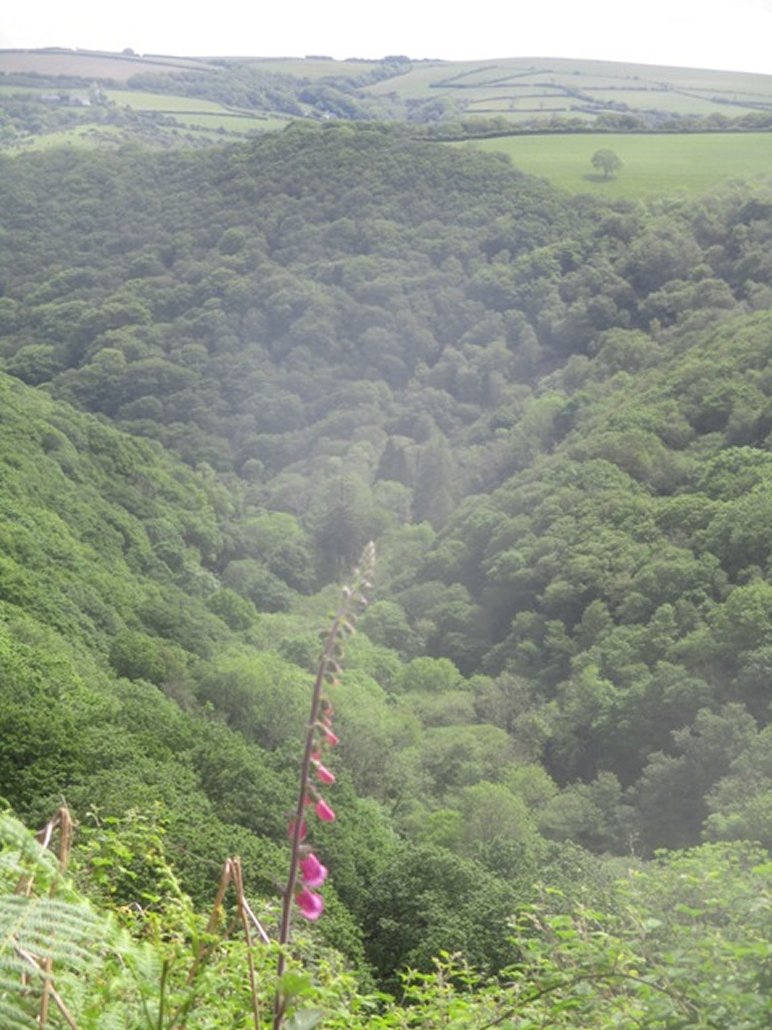
From Hunter’s Inn, I immediately began the long climb back out onto the breezy coastal uplands. This was some of the most gruelling biking I’ve ever done. It would take me four-and-a-half hours to cover the 15 miles between Lynton and Ilfracombe, a pace that’s slower than that of a fast walker.
Having gained the heights again, I immediately and predictably swept back down to the coast at Combe Martin, which claims one of England’s longest main streets at about three miles (for much of its length, Combe Martin consists of nothing else but this straggle of mostly whitewashed terracing along a valley floor). I rewarded myself at the seafront with a gooey, pricey, triple-cone ice-cream. The vendor was a matey sort from Harlow, who had moved here a year before to open his parlour. The nearest motorway and railway were an hour away, his son had already started talking Devonian and he was intending to stay here, far away from it all. I should have asked him, far away from what exactly, but I think I understood.
I’d had enough of the scenic route after Combe Martin, and reluctantly joined the more direct A399 to Ilfracombe. Though it clung close to the coast, it still managed to throw up countless minor climbs and drops, and of course the traffic was awful. Every mile or two some old dear in a Honda Civic would sit on my tail at a distance of about 50 yards as if she was afraid I was going to explode in a fireball in front of her, and wouldn’t pass unless she could see about a mile of open road ahead. Weirdly, this horrible highway, one of the Devon trunk routes, was the only place on this trip where I passed a lot of other cyclists. I suppose the attractions were the sea views and occasional palm tree, but it was almost as if climbing endless knackering West Country hills on narrow, winding and confusing back-lanes wasn’t really much fun.
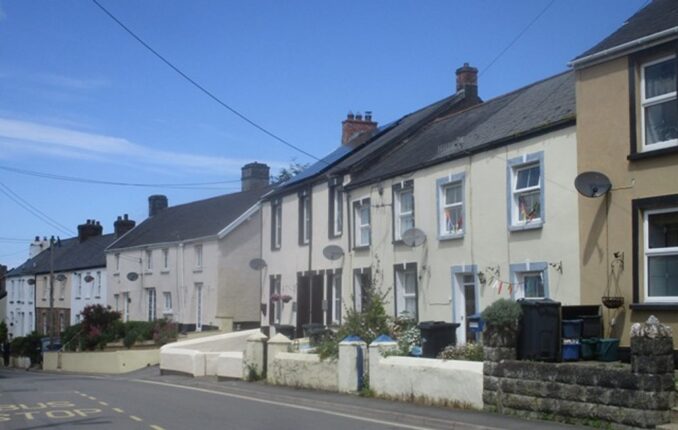
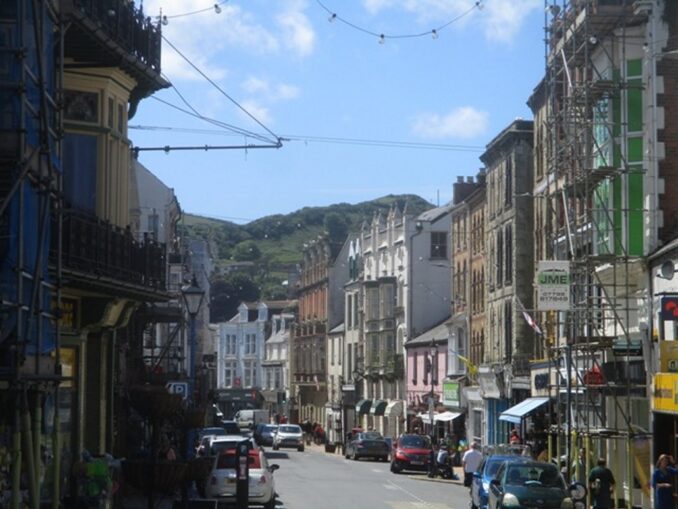
Combe Martin, above, and Ilfracombe
With its familiar high street chains and London and Midland accents, Ilfracombe looked rather less far away from it all than Combe Martin. This ancient fishing village and port became perhaps the archetypal upmarket Victorian seaside resort, a place of grand hotels, craft shops, Gothic Revival terraces and rows of big bay windows. The waterfront with its colourfully painted housefronts looked lovely; I was only deterred from popping down on reading in a tourist brochure about its “continental pavement cafe” scene. I wasn’t in the mood for yuppies sipping frappuccinos; I turned tail and fled up into the hills again on what proved to be the worst approach route to Barnstaple.
It was the back way, a B-road, and I’d assumed it would be quieter and nicer than the more direct A-road. Wrong. Following yet another long river gulley, the road was narrow, twisting but fast, and the traffic was bumper-to-bumper. The climb, most of which I once more walked, lasted nearly an hour. What I should have done was use the old railway trackbed to Barnstaple. But I hadn’t been able to find it.
Things improved when I finally got to the junction at the top, where the traffic mysteriously drained away and I found myself cruising down a long, gentle, airy dipslope which gave grand views of Barnstaple bay. I rode straight through Barnstable to the station, which once served a major junction and today sits in marooned in a wilderness of roundabouts and Burger King and Poundland-type sheds with vast car-parks. The platform display was on the blink. I asked a teenage girl sitting on a bench if she knew what time the next train was. She just said “no,” with a mild air of offence at being disturbed, and returned to her mobile phone. Well, sod you.
I found out from someone else that the next one was at five. That left just enough time to buy wine, bread and cheese at the Lidl shed for the long train ride back to Yorkshire, on a chain of mostly penultimate or last trains. Barnstaple to Exeter, Exeter to Bristol, Bristol to Birmingham New Street, New Street to Leicester, and Leicester to South Yorkshire, arriving half midnight.
It was a troubled journey. A drunk on the Bristol-Birmingham train roamed around the carriage pestering people for a “smoke;” he was greeted in New Street by seven policemen. I nattered with a lad who had spent eight days cycling from Telford to Newquay “for some surfing and skateboarding” and was now coming back in comfort. He was travelling with 80kg of luggage in eight bags, and when he got off at New Street, they told him his connection to Telford was cancelled due to “electrification issues.” It was late evening now and, even if he could find a bus, he wasn’t going to get his bike and baggage onto it. I suspected he would be riding home. And so, I feared, might I. At Nuneaton, our train got stuck behind a slow goods train. We made the final connection at Derby with five minutes to spare.
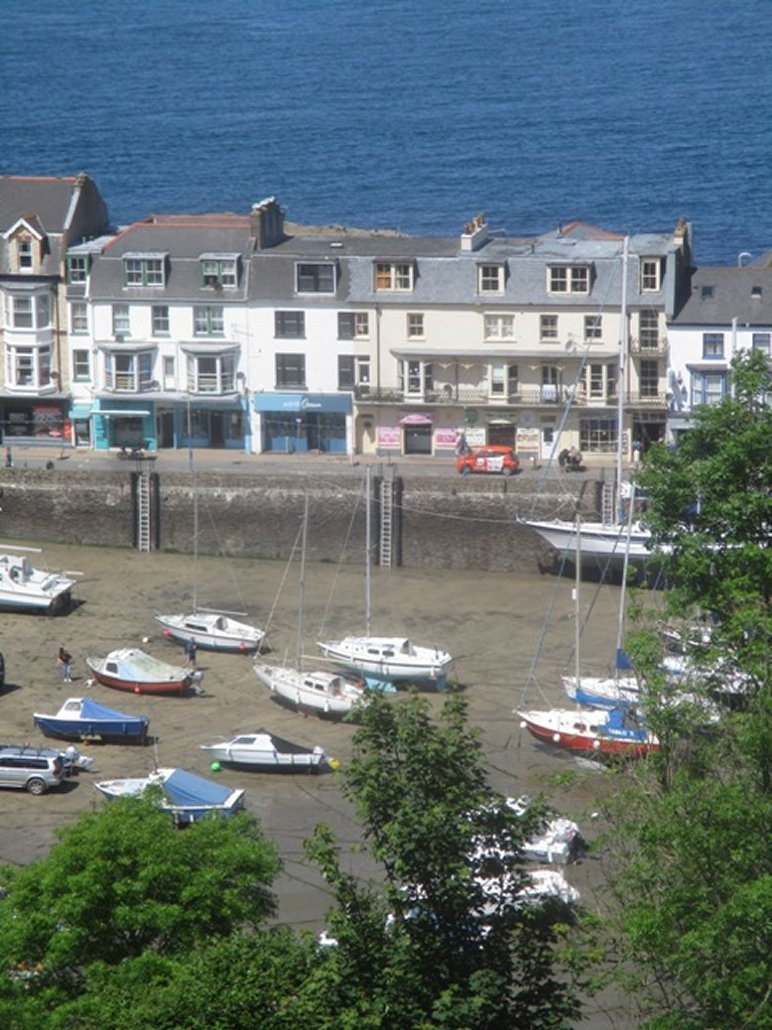
More like this can be found at my website Riding the Shires. Half a century of cycle-touring.
I’m fine with being quoted (up to two paragraphs), but all rights @joeslater.
© text & images Joe Slater 2025



